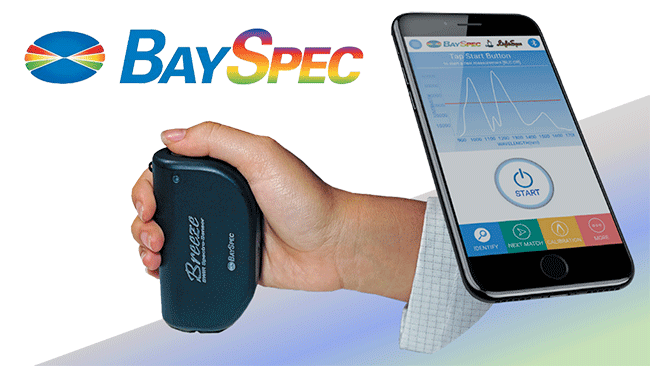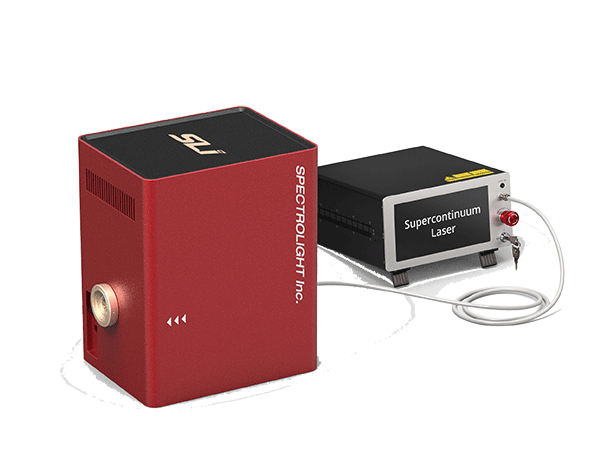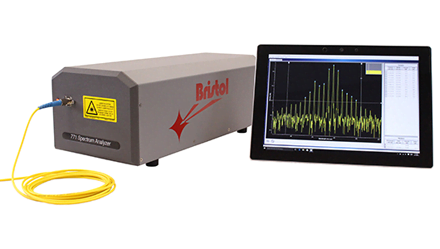|
Wednesday, August 7, 2019 |
|

|
|
|

|
August 2019
Spectroscopy Tech Pulse is a special edition newsletter from Photonics Media covering key developments in spectroscopy technology. Manage your Photonics Media membership at Photonics.com/subscribe.
|
|
|
IR Metrology with Visible Light
A new approach to IR metrology uses common optical components for the visible range. The technique is based on nonlinear interference of correlated photons, in which information about the photon in the IR range is inferred from the measurement of its correlated photon in the visible range. Applications for spectroscopy and optical coherent tomography (OCT) are discussed in this article.
|
|
|
|
|
|
NIRS Surpasses Conventional Diagnostics for Orthopedics
Early diagnosis of musculoskeletal diseases is vital for effective treatment. To prevent disease progression, endoscopy-guided surgeries are performed to repair torn ligaments, the meniscus, and damaged cartilage. A potential solution for objectively assessing joint tissue conditions during arthroscopy is the use of optical spectroscopy, such as near-IR spectroscopy (NIRS).
|
|
|
|
|
|
|
sponsor
|

|
|
 Breeze™ Palm Chemical Sensor
Breeze™ Palm Chemical Sensor
BaySpec Inc.
BaySpec introduces Breeze™ the world’s smartest palm spectral analyzer in the 400 — 1700 nm range. The Breeze™ is highly efficient, ultra-sensitive, compact, and fast. For the first time, a smart device delivers laboratory performance in a handheld form. This smart device comes fully loaded with light source, probe, and miniature spectrometer. Request Info Visit Website
|
|
|
 Tunable Filter for Supercontinuum Lasers
Tunable Filter for Supercontinuum Lasers
Spectrolight Inc.
A new, simple, and compact approach for tunable wavelength filtering to couple with supercontinuum lasers is introduced with a device called Flexible Wavelength Selector (FWS) Poly Laser Version. With high transmission efficiency (>80%) and high out of band blocking (>OD6) compared to other conventional tunable filters... Request Info Visit Website
|
|
|
|
|
|
 771 Series Laser Spectrum Analyzer
771 Series Laser Spectrum Analyzer
Bristol Instruments Inc.
The 771 Series Laser Spectrum operates as both a high-resolution spectrum analyzer and a high-accuracy wavelength meter. With spectral resolution up to 2 GHz, wavelength accuracy as high as ± 0.2 parts per million, and an optical rejection ratio of more than 40 dB, the model 771 provides the most detailed information about a laser's spectral properties. Request Info Visit Website
|
|
|
|
|
Image Spectrometer Captures and Calibrates Record Amounts of Data Rapidly
Researchers at Rice University have developed a compact, fiber-based image spectrometer for remote sensing. Called the Tunable Light-Guide Image Processing Snapshot Spectrometer (TuLIPSS), the device combines high spatial resolution with large amounts of spectral information and can deliver data to a detector instantly.
|
|
|
|
|
|
Multispectral Imaging Aids Wound Healing, Pathology Research
From airborne mapping to astronomical imaging to manufacturing inspection, multispectral imaging (MSI) has long been the go-to tool for extracting crucial details, often from distant views. Today, MSI is making promising inroads in biomedical applications, where its capacity for noninvasive, cost-effective imaging delivers customizable information in real time.
|
|
|
|
|
|
MIR Upconversion Imaging Could Speed Medical Diagnostics
Researchers from multiple institutions collaborated to develop a way to translate information from the mid-infrared (MIR) region, where chemical signatures are most distinct, to the near-infrared (NIR), where existing camera technology is most sensitive. Their new, wide field-of-view system can capture MIR spectral images of fast events or dynamic processes that take place in a matter of milliseconds.
|
|
|
|
|
|
New Class of Visible-Light Photoswitches Could Provide Greater Molecular Photocontrol
A consortium of scientists from five European institutions has developed a new class of molecular photoswitches that are operated with visible light only. The new switches show large separation of absorption bands and function in various solvents including water. The researchers believe that the new switches could lead to the development of improved photocontrolled systems for a variety of applications that require fast, responsive functions.
|
|
|
|
|
|
Wearable NIRS Device Reveals How Seals Prepare to Dive
Scientists at the University of St. Andrews have created a wearable, noninvasive device based on near-infrared spectroscopy (NIRS) that can be used to investigate blood volume and oxygenation patterns in freely diving marine mammals, such as seals.
|
|
|
|
|
|
|
 |
|